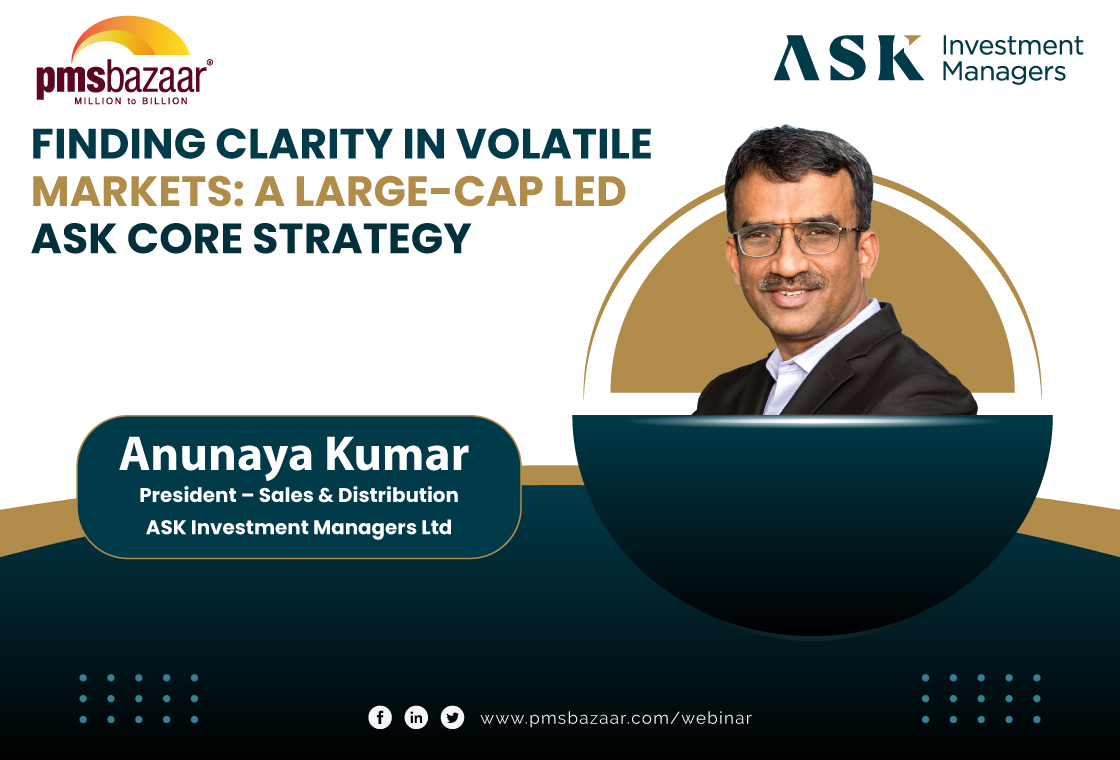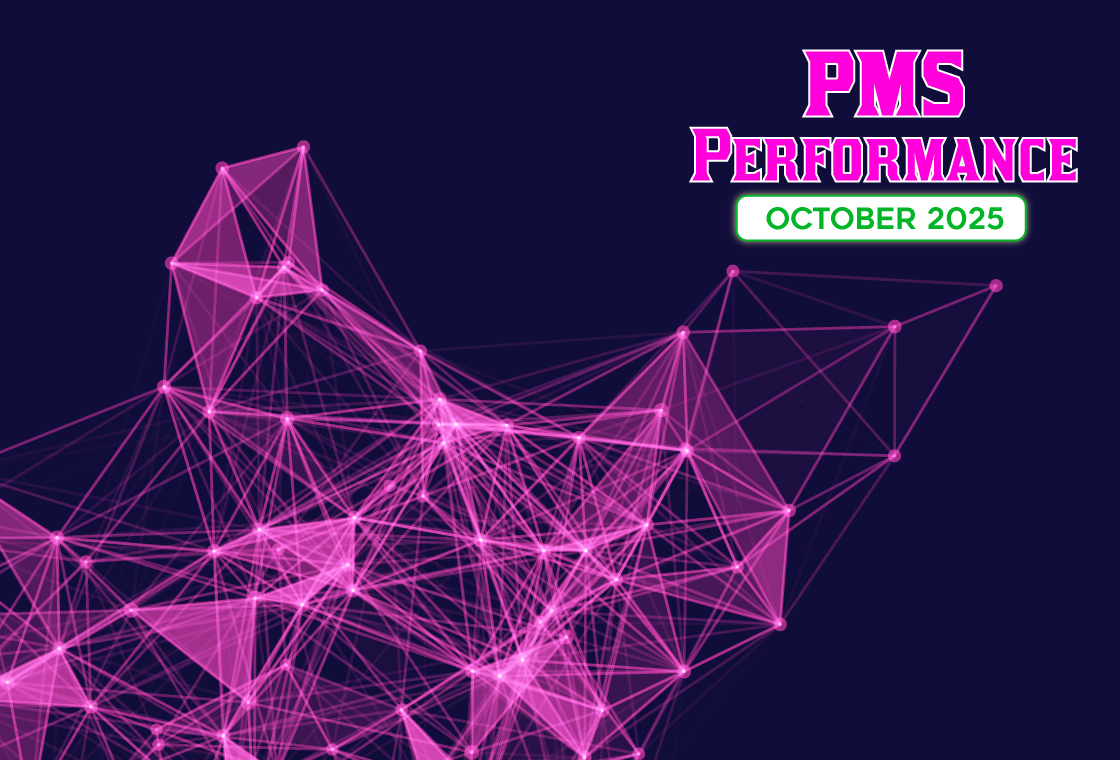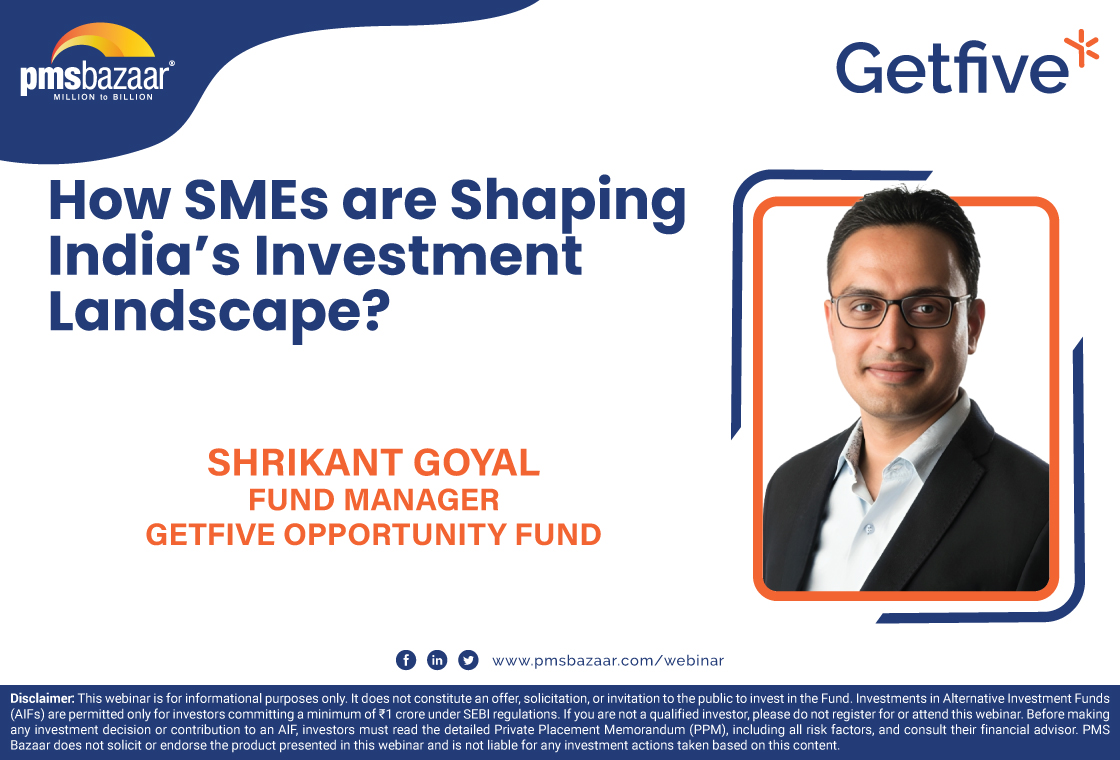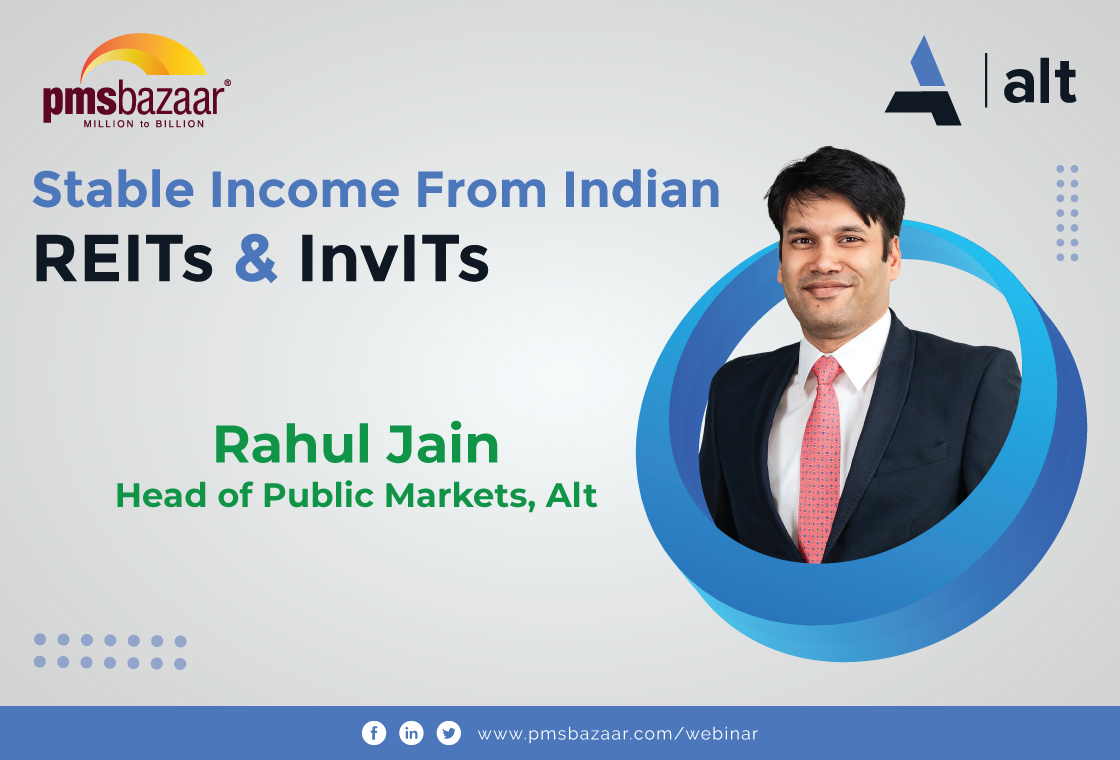Recent years have seen rapid technological advances in financial services, dynamic regulatory challenges, and product innovations. Amidst these developments, Lakshmi Iyer, CEO of the investment advisory business at Kotak Investment Advisors, shared thought points on the current trends in these topics with Vikas Sachdeva, Managing Director, and Madanagopal Ramu, Head-Equities, both from Sundaram Alternates.

Mr. Sachdeva began the discussion by asking Ms. Iyer how she saw her earlier role in the AMC (asset management company) helping her with new responsibilities. Talking about the transitioning from a key role in mutual funds to heading the investment advisory space, Ms. Iyer spoke about the similarities, as both were fiduciary responsibilities, in her opinion, given the trust that needed to be built with unitholders and shareholders. The next level, she observed, would be to bring the level of complete transparency from the AMC industry to the investment advisory space as well. Deepening of relationships is needed more in the investment advisory space. Drawing the links to the two segments, she likened the mutual fund industry to the needle and the advisory space to the thread – both needed to stay together to run the long investment relay race.
Asset allocation with alternatives:
Given all the focus on asset allocation, Mr. Sachdeva then asked Ms. Iyer how she saw alternatives and PMS strategies fit within investor portfolios. Ms. Iyer started by saying that such products or strategies in portfolios must be aligned with the risk appetite and return expectation profiles of investors.
Depending on each investor’s requirement and appetite, innovative solutions could be built, by using alternatives or PMS strategies within the risk-return boundary. For some investors with a low-risk appetite, plain-vanilla simple investments would be well-suited.
But other complex products or solutions, such as private credit, would be suitable for those willing to take more risk.
She emphasized the risk-return boundary part for investors, likening it to the ‘Lakshman Rekha,’ as that set the tone for deciding the right course for choosing suitable products and strategies.
Dealing with tough macros:
At this point, Mr. Ramu observed that the last couple of years have seen geopolitical tensions, inflation spikes, interest rate hikes, recession fears in advanced economies, and the like. He wanted to know how the fallout of difficult macros should be viewed and handled by fund managers and advisors.
Ms. Iyer said that compared to much of the rest of the world, India was in a much better macroeconomic situation. She noted that the inflation rate is coming down, though interest rates remain high. However, interest rates are close to their peak levels in her view and would probably plateau and remain stable for some time before declining. So, the net impact was positive for investors, in her opinion. The same could not be said of the US or Europe currently.
Therefore, in India, the peak interest rate situation seems to favor risk assets and fixed income. Investors can lock into higher rates in fixed-income instruments and, also, make capital gains with staggered investments in equities over the next 3-5 years.
Advisory role in AIFs:
Mr. Ramu then put forth the point that there were several instruments available for investors in the alternatives space – private credit, real estate, private equity, even bitcoins, and the like. He wanted to understand the role of advisors in alternatives to help investors make the right choices.
Ms. Iyer said that the role of advisors was relevant at all times and across financial products. Given all the macro challenges and continuous news flows, advisors must be the ones to guide investors in making the right choices, she observed. In her experience, most investors felt that their respective portfolios were the best. In such circumstances, advisors must tactfully ‘show the mirror’ to investors, point out shortcomings, and suggest improvements to portfolios.
She felt that advisors must also be ahead of the curve in terms of being able to filter out the most relevant and actionable data from a plethora of information available to investors. The most knowledgeable and skilled advisors would stand out, in her opinion.
India’s inclusion in the global bond index:
There were expectations that Indian bonds would find their way into the JP Morgan global bond index. But that has been put on hold. Mr. Ramu wanted to understand how important it was for India to be included in the index and the likely timeline for when it would happen.
Ms. Iyer believed that India’s inclusion in the global bond index would indeed happen, though the timing could not be ascertained at the moment. She noted that after countries such as South Korea and China were included in the index, they benefitted a lot.
It is a hygiene factor that must happen sooner or later with India, too, in her opinion.
Mr. Ramu observed that for a country starved for capital flows in the debt market, India’s inclusion in the bond index would be welcome. Ms. Iyer noted that foreign investors typically looked to hedge currency risk in fixed income, which could be an added reason for index inclusion.
Personalized advice in an era of AI:
Given all the action around robo advisory, artificial intelligence (AI), and the like, Mr. Sachdeva then sought to understand how personalized advice could be given to investors in the current technology-driven era.
Ms Iyer said technology and AI could be great complimentary tools, but were not enough in themselves. The personalized touch, knowledge, and experience that an advisor brings are still indispensable for investors in her view. She noted that there needs to be a certain level of paranoia in advisors about AI and other tools taking their jobs away so that they are forced to innovate and come up with smart solutions and stay on top of their game. But she was firm in her view that technology could be an enabler, but not a threat to personalized advisory.
Mr Sachdeva summarized it by stating that investors would not be able to take decisions based on raw data analysis alone and would need personalized advice. Also, just personalized advice without knowledge of technology tools would not be enough. Hence advisors needed the expertise and the wherewithal to handle tools to sharpen their advice.
Getting over Indexation shocker for debt funds:
With the Finance Bill removing indexation benefits for debt funds, Mr. Sachdeva then sought to know how advisors must handle this regulatory change when dealing with investors.
Ms. Iyer was of the opinion that the removal of indexation shouldn’t be seen as the end of the road. She noted that debt investments now have a level playing field. AIFs in the private credit, acquisition financing, and loan against shares spaces offered great opportunities for investors.
Private credit was a space vacated by banks as they did not lend to the category. So, there were considerable opportunities, that too in the performing credit space, to generate better returns. One needn’t go to distressed assets in search of better returns, she observed. Ms. Iyer noted that there were investment avenues outside the 7-8% sovereign and quasi-sovereign debt opportunities in the 13-14% gross-yielding private credit space. In the next 4-6 quarters, this category would catapult to the next level in her view.
Resolving the active versus passive impasse:
Mr. Ramu then steered the discussion towards the raging topic of active versus passive investments, especially as active mutual fund managers have underperformed benchmarks. He wanted to know how to approach this issue of the two styles.
Ms. Iyer stated that passive and active could always co-exist. Given that India is in the growth space, there will definitely be scope for active investments to flourish, and it was not that passives would fully overtake them. She was of the view that there is a significant value addition that money managers could do in the mid and small-cap stock spaces. That doesn’t mean they can't do much in the large-cap segment. But that is where complementary strategies could help, in her opinion.
This was one dagger in the investment portfolio of investors where two ‘swords’ – active and passive – could co-exist, she noted in a lighter vein.
Queries and responses:
As the webinar was thrown open to questions from participants, the first query was on whether the old asset allocation idea of shifting almost entirely to debt upon retirement was advisable, given that the corpus needed to last for 25-30 years at least these days.
Ms. Iyer did not believe in any rule rigidly linking age with equity allocation. There needed to be bulky fixed income allocation to generate annuity as also some equity to ensure growth in the overall portfolio. She pointed out that asset allocation will have to be linked to financial goals and that retirement was only one target. These days there are people who retire at 40 and play golf, she observed and so the allocation pattern needs to be dynamic. She also noted that 90-95% of investor returns come from the right asset allocation rather than fancy products. Ms Iyer said that in general, it would be alright to take stock of one’s portfolio once a year.
Responding to a query on de-dollarisation, she said that though attempts are being made to achieve it, there may be limited success given that the US is the mother of all economies. There may, at best, be diversification away from the dollar, but replacement may not be possible.
Replying to another query on how the advisory space and products here stacked up against advanced economies, Ms. Iyer noted that in many cases these developed countries were trying to learn from Indian practices on advisories. On products, however, she noted that Western economies had a much higher level of sophistication, and India could learn from those offerings.
The Webinar Panel discussed all the above-mentioned points and more. Watch the entire session with the appended link below -
Get access to rich data and analytics of PMS & AIF by subscribing to us. Join the 50000+ investors & experts now: Subscribe NOWRecent Blogs

MICRO CAPS: The Dark Horses of the Indian Equity Market
PMS Bazaar recently organized a webinar titled “MICRO CAPS: The Dark Horses of the Indian Equity Market,” which featured Mr. Rishi Agarwal and Mr. Adheesh Kabra, both Co-Founders and Fund Managers, Aarth AIF. This blog covers the important points shared in this insightful webinar.

Finding Clarity in Volatile Markets: A Large-Cap Led ASK CORE Strategy
PMS Bazaar recently organized a webinar titled “Finding Clarity in Volatile Markets: A Large-Cap Led ASK CORE Strategy,” which featured Mr.Anunaya Kumar, President – Sales and Distribution ASK Investment Managers Limited. This blog covers the important points shared in this insightful webinar.
.jpg)
Passively Active Investing — A Modern Investor’s Lens on ETF-Based PMS
PMS Bazaar recently organized a webinar titled “Passively Active Investing — A Modern Investor’s Lens on ETF-Based PMS,” which featured Mr. Karan Bhatia, Co-Founder and Co-Fund Manager , Pricebridge Honeycomb ETF PMs. This blog covers the important points shared in this insightful webinar.

Spot the Trouble: Red Flags in Equity Investment Analysis
PMS Bazaar recently organized a webinar titled “Spot the Trouble: Red Flags in Equity Investment Analysis,” which featured Mr. Arpit Shah, Co-Founder & Director, Care Portfolio Managers. This blog covers the important points shared in this insightful webinar.

Long-Only AIFs Rebound Sharply in October; Long-Short Strategies Lag Despite Lower Volatility
106 long-only AIFs averaged 3.68% vs 32 long-short AIFs at 2.7%; only 24–31% of funds beat key indices

Markets log strongest monthly gains in 7 months; PMS performance turns near-uniform in October
Nifty 50 TRI gained 4.62%, BSE 500 TRI rose 4.27%; 415 of 427 equity PMSes ended positive

How SMEs are Shaping India’s Investment Landscape?
PMS Bazaar recently organized a webinar titled “How SMEs are Shaping India’s Investment Landscape?” which featured Mr. Shrikant Goyal, Fund Manager, GetFive Opportunity Fund.

Stable Income from Indian REITs and InvITs
PMS Bazaar recently organized a webinar titled “Stable Income from Indian REITs and InvITs,” which featured Mr. Rahul Jain, Head of Public Markets, Alt.

